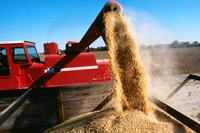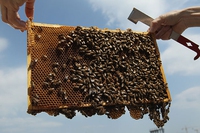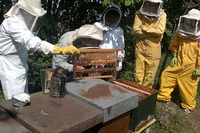
How much (GM) soy is hidden in our food
According to a WWF report, the average European citizen eats 61 kg of soy yearly, 93 percent of which is hidden as animal feed in meat, fish, eggs and dairy products.
According to a WWF report, the average European citizen eats 61 kg of soy yearly, 93 percent of which is hidden as animal feed in meat, fish, eggs and dairy products.
The phenomenon of honeybee deaths in the United States doesn’t stop, it rather gets worse. Over the last 12 months, honeybees’ number dropped by 42.1% compared with 34.2% of the previous year (2013-2014), according to a preliminary report published by the U.S Department of Agriculture (USDA) on Wednesday. The valuation has been carried out by
A new study reveals that forests can play a key role in achieving global food security.
L’allarme viene lanciato dal Wwf che ha individuato undici aree in cui si concentrerà l’80 per cento della perdita di foreste.
A project supported by the Italian Cooperation in collaboration with Enea. Thanks to solar power, farmers employ sustainable farming methods.
A political, social, and ecological album: The Monsanto Years will be released on 16 June, but the album’s title talks turkey. Neil Young has always been on the front line to raise fans’ awareness on environmental and sustainable farming issues and, after having taken a stand against large oil companies in Canada, he now rails
By 2050 more the 80% of the world’s population will live in ever-expanding cities. To feed 9 billion people without consuming excessive expanses of soil, Professor Dickson Despommier of Columbia University in the City of New York devised the concept of vertical farming. Vertical farms are buildings which, instead of being used as
The increase in people enrolling for the agriculture department and the boom in organic products are clear: young people want to return to work the land. This is one of the positive effects of the economic crisis: unemployment is tackled by going back to the land. There’s who works family lands, who rent out cooperatives’
Honeybees and other insect pollinators are in danger. Since 2006 they have been experiencing depopulation that is mostly stricking European and US worker bees. The identified causes are multiple, such as pests and habitat loss, but the main cause seems to be linked to the agricultural use of 3 insecticides (the neonicotinoids) that affect insect pollinators’ nervous system.
Seed sharing has been banned in some American states, perhaps at the behest of pressures from powerful multinationals in the agricultural sector.








